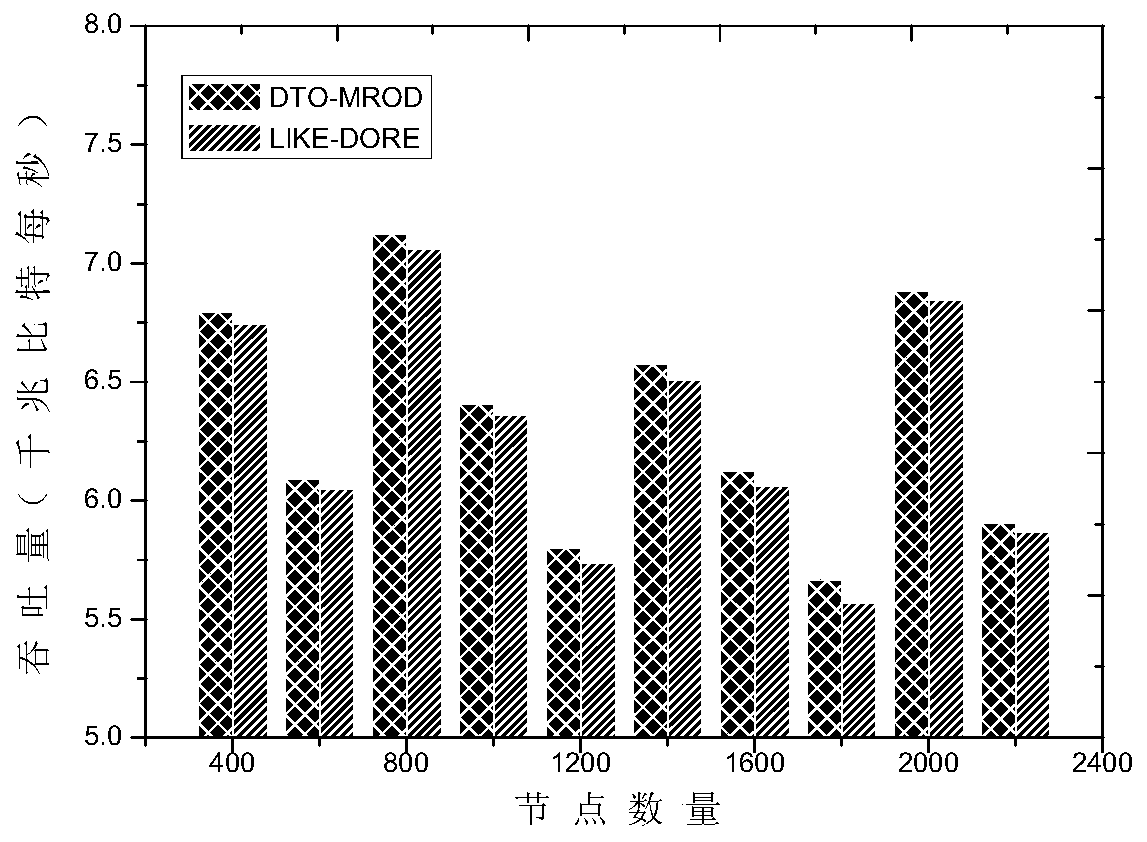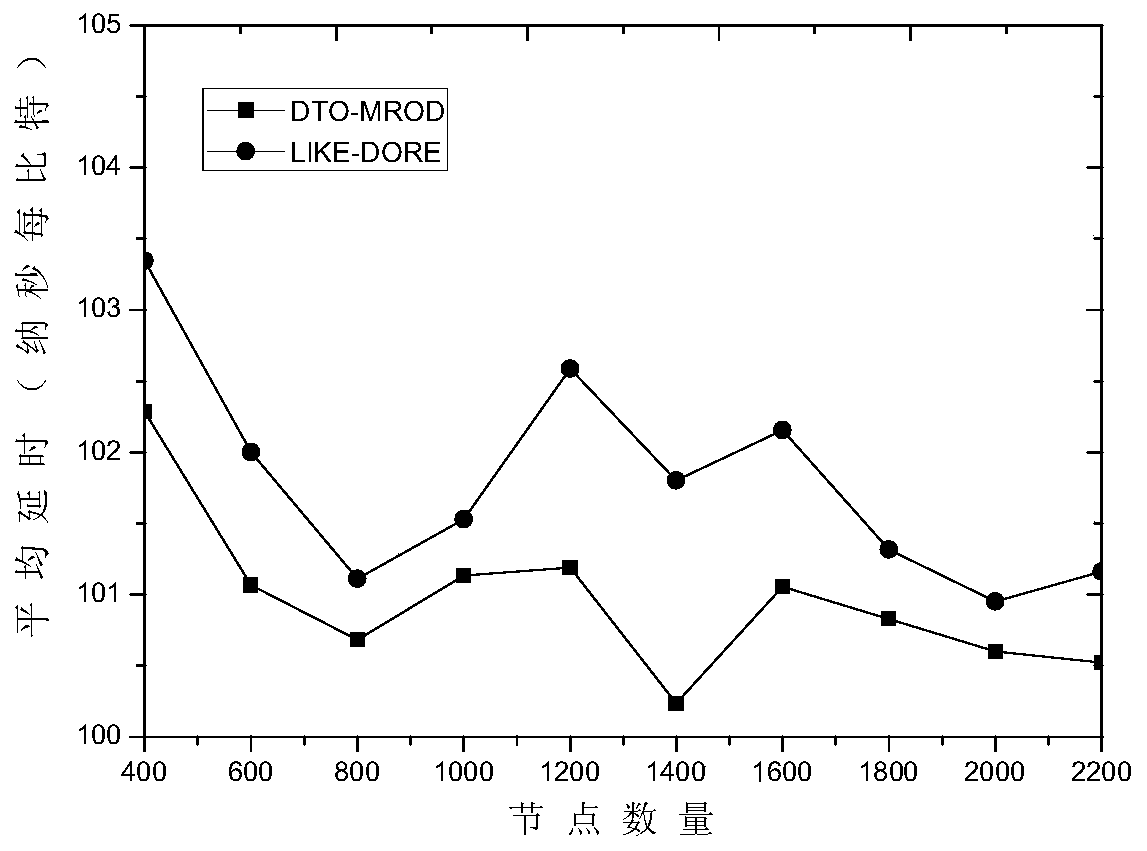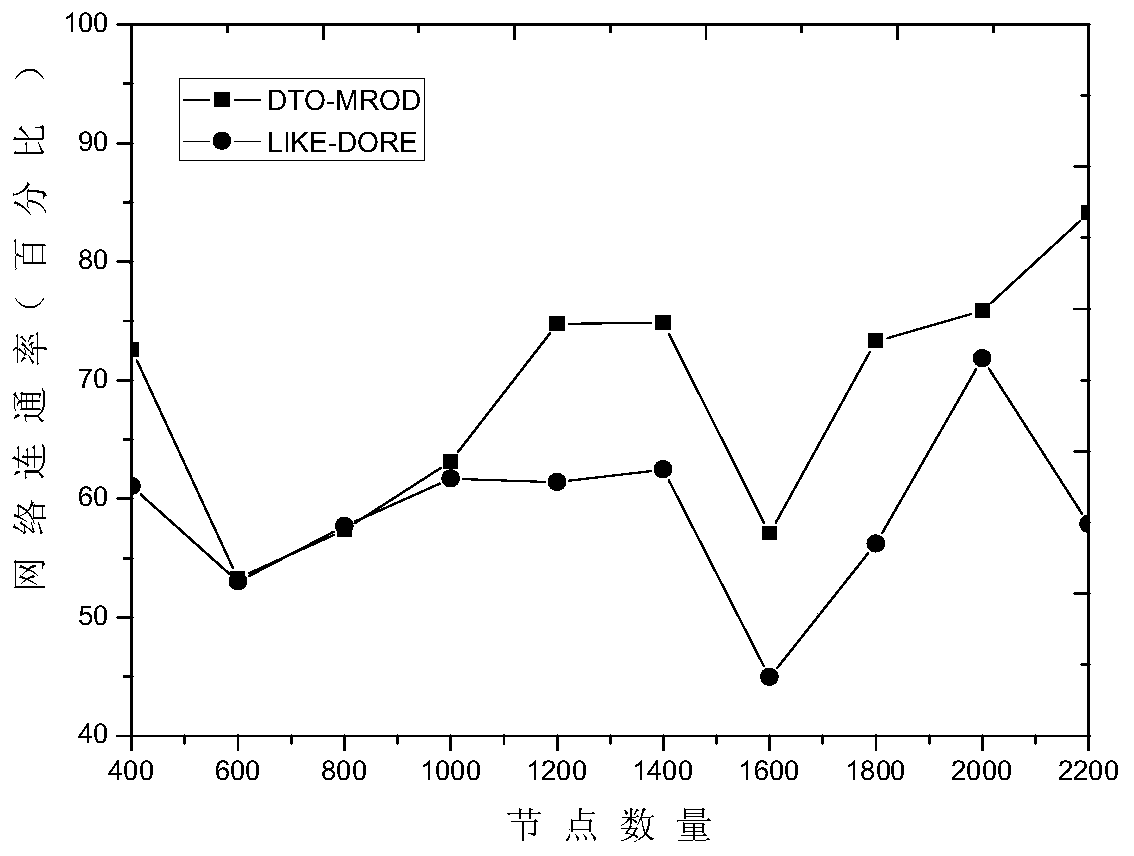A cellular downlink throughput optimization method based on out-of-band d2d multi-hop relay
A technology of multi-hop relay and optimization method, applied in advanced technology, climate sustainability, sustainable communication technology, etc., can solve the problem that the network life cannot be guaranteed, the communication overhead and computing overhead are large, and the remaining relays are not considered. energy and other issues
- Summary
- Abstract
- Description
- Claims
- Application Information
AI Technical Summary
Problems solved by technology
Method used
Image
Examples
Embodiment Construction
[0076] The present invention will be further described below in conjunction with the accompanying drawings and specific embodiments.
[0077] The invention discloses a cellular downlink throughput optimization method based on out-of-band D2D multi-hop relay assistance, that is, DTO-MROD (Downlink Throughput Optimization by Multi-hop Relay-assisted OutbandD2D Communications). DTO-MROD is a centralized algorithm that runs on the base station. The base station selects one of the following three ways to receive data from the base station for each UE that obtains a cellular channel. The three ways are to receive data directly from the base station, by selecting a The relay relays the received data and relays the received data by selecting two relays. Therefore, the DTO-MROD algorithm involves three stages: preselecting the first relay, preselecting the second relay, and verifying the throughput of the relay link. The input parameters are information such as each UE’s cellular link...
PUM
 Login to View More
Login to View More Abstract
Description
Claims
Application Information
 Login to View More
Login to View More - Generate Ideas
- Intellectual Property
- Life Sciences
- Materials
- Tech Scout
- Unparalleled Data Quality
- Higher Quality Content
- 60% Fewer Hallucinations
Browse by: Latest US Patents, China's latest patents, Technical Efficacy Thesaurus, Application Domain, Technology Topic, Popular Technical Reports.
© 2025 PatSnap. All rights reserved.Legal|Privacy policy|Modern Slavery Act Transparency Statement|Sitemap|About US| Contact US: help@patsnap.com



